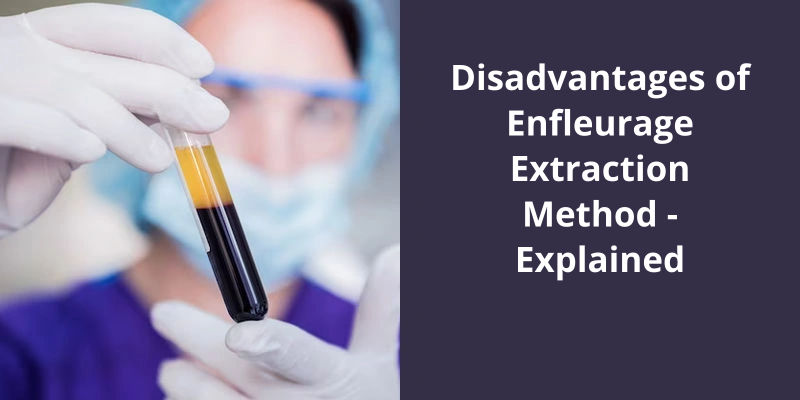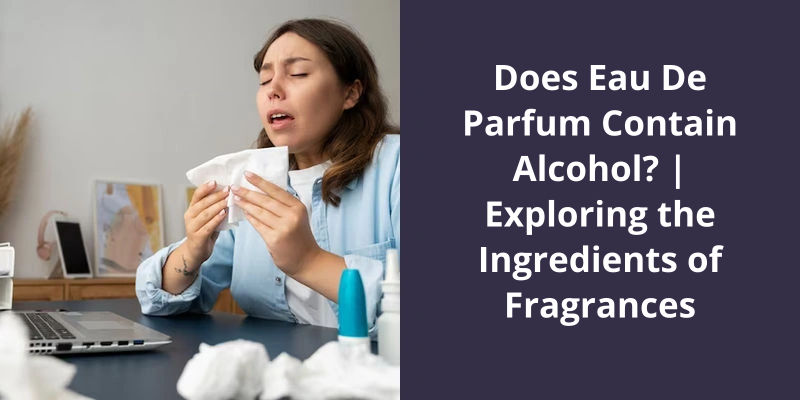The Enfleurage extraction method, while effective in maintaining the original essence of the plant, has three primary drawbacks. First, it is a labor-intensive method since the fats need to be changed manually and the process is long and repetitive. Second, the process is expensive due to the high cost of the fats used and the need for a large amount of plant material. Lastly, the output is also relatively low making it an inefficient choice for large scale production.

Why Is Enfleurage Used for Some Extractions Rather Than the Other Methods?
Enfleurage is a traditional and laborious extraction method that involves soaking flower petals in a fat or oil base until the fragrance is absorbed. The fat or oil then becomes saturated with the natural oils present in the petals. After a certain amount of time has passed, the flowers are removed and replaced with fresh ones until the desired level of scent is achieved. This process can take up to several weeks and requires careful monitoring of temperature and humidity.
One of the reasons enfleurage is used for some extractions is the need to preserve delicate floral fragrances. Distillation and solvent extraction methods can be too harsh and result in the loss or alteration of some of the more fragile aromatic compounds.
Another advantage of enfleurage is it’s versatility. Unlike other methods that require specific equipment, enfleurage can be done with simple tools and is accessible to small-scale producers. Some traditional artisan perfumers still prefer enfleurage for the unique character it imparts to their creations.
However, despite it’s advantages, enfleurage is a time-consuming and expensive process. It requires a lot of plant material to produce a small amount of fragrance and the final product can be costly. This is why enfleurage is often reserved for the production of high-end, artisanal fragrances or for botanical extracts used in natural cosmetics and skincare.
The extraction of active constituents from medicinal and aromatic plants is a significant process that enables the isolation of desired compounds that can be used for various purposes. Conventionally, there are several techniques for plant extraction, including Soxhlet extraction, maceration, and hydrodistillation, among others. These techniques are widely used in the pharmaceutical, food, and cosmetic industries. Let’s take a closer look at each of these techniques and their applications.
What Is the Extraction Technique for Aromatic Plants?
Soxhlet extraction is a method used to extract compounds from a solid into a solvent. The technique utilizes a Soxhlet extractor, which is a glass apparatus that consists of a round bottom flask, a condenser, and a Soxhlet extraction thimble. The thimble is filled with the plant material, and a solvent is passed through the material continuously. The solvent dissolves the active compounds, and the solution drains back into the round bottom flask. This process is repeated until the desired amount of extract is obtained.
Maceration is another conventional extraction technique. It’s a simple method that involves placing the plant material in a solvent and allowing it to sit for a period of time. During this time, the solvent dissolves the active compounds from the plant material. The resulting solution is then filtered, and the solvent is evaporated to obtain the extract.
Hydrodistillation is a method of extracting essential oils from aromatic plants. The process involves placing the plant material in a still with water and heating it. As the water and plant material heat up, the essential oils are vaporized and pass through a condenser, where they’re collected and separated from the water. This method is commonly used for extracting essential oils from plants such as lavender and peppermint.
Another conventional extraction technique is percolation. This method involves passing a solvent through a bed of plant material to extract the active compounds. The solvent is first introduced at the top of the bed and passed through the material by gravity or pressure. The resulting solution is collected at the bottom of the apparatus.
Finally, steam distillation is a popular method for extracting essential oils from aromatic plants. The resulting liquid is a mixture of essential oil and water, which is separated by decantation and filtration.
These conventional extraction techniques are widely used for the extraction of active constituents from medicinal and aromatic plants. These methods are still commonly used due to their simplicity, affordability, and effectiveness. Some of these newer techniques include ultrasound-assisted extraction, microwave-assisted extraction, and supercritical fluid extraction.
Comparison and Contrast of Different Extraction Techniques Including Their Strengths and Weaknesses
This article analyzes several extraction techniques, highlighting their pros and cons. We aim to help our readers better understand how to choose the right extraction method to achieve their desired results.
Aromatic oils have been an important part of human culture for centuries. They’re extracted in many ways, some more traditional than others. Among the various methods of extraction are water distillation, steam distillation, and maceration. While most methods are effective, maceration is often the go-to option when distillation yields poor results. Let’s take a closer look at this method and how it works.
What Is the Method of Extraction of Aromatic Oil?
Water distillation is the oldest method of extracting aromatic oils from plant materials. It involves boiling water in a still and then passing steam through the plant material to extract the oil. This method is ideal for plants with delicate constituents that can be damaged by high temperatures. However, it isn’t suitable for plants with heat-sensitive constituents.
Steam distillation is the most common method used to extract essential oils from plant materials. In this process, steam is used to rupture the oil glands in the plant material, and the oil is carried along with the steam and condensed. Steam distillation is best suited for plants with high oil content and those with heat-resistant constituents.
Cohobation is a method of oil extraction that involves repeating the steam distillation process several times using the same batch of plant material. This method is used when there’s a low yield of oil from the initial distillation and helps to increase the yield of oil.
Maceration involves soaking plant material in a solvent to extract the oil. The solvent is typically a fat or oil, and the process is carried out over several days. Maceration is best suited for plants with low oil content that don’t respond well to distillation methods.
Enfleurage is a method of extraction that involves placing plant material onto a layer of fat or wax. The scent of the plant material is absorbed into the fat or wax, and the oil is extracted from the fat through a process called solvent extraction. This method is used for plants that are too delicate or fragile for other extraction methods.
Source: Extraction Methods of Natural Essential Oils
Conclusion
In conclusion, despite it’s historic and romantic roots, the enfleurage extraction method isn’t without it’s limitations. The low yield, demanding know-how, lengthy process, and extensive need for materials make it a less efficient and more costly option compared to modern extraction methods. While it may have some niche applications, the disadvantages of enfleurage make it clear that this technique isn’t suitable for large-scale commercial extraction operations. As technology continues to advance, it’s likely that newer, more efficient techniques will continue to emerge, allowing for a wider range of options for the production of high-quality fragrances and essential oils.





